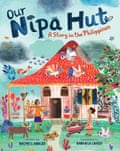
When reading a book, I like to understand something about the person who wrote it. The Captive Imagination is rich in words yet strangely elusive in overall meaning, and feels as though it has been written by several different people, at times interrupting each other. So who are these characters? Elias Dakwar is a professor and scientist in the US, but he is also a clinician specialising in the treatment of addiction, a philosopher, a lover of literature and language, as well as a human being striving to understand life’s great mysteries. There is a sense of yearning throughout the book, as if it is a quest to find something; Dakwar invokes the fictional strivings of Don Quixote and compares them with the obvious desperation of the heroin addict. But he also notes that his patients often say: “I just want to be happy”, and perhaps this is what he, too, is saying.
As a psychiatrist with the same specialism, I was drawn to Dakwar’s vivid stories of patients and their different histories of drug use. They are clear, informative and also modest; Dakwar acknowledges the difficulties we have in helping people, given our limited understanding of both addiction and the human mind. He writes lucidly of brain-based models of addiction, while making it clear that they cannot fully explain people’s experiences. I must admit to envying the time he was able to spend with individual patients, working in a very different system from the one we have here in the UK.
Dakwar explores the myths and misconceptions of addiction, as well as the science, and shows how the patient’s experience is at least as important as what the latest research tells us. He describes in detail the use of ketamine given in combination with psychotherapy, and of the difficulties he has faced acquiring permission and funding to pursue his research into a treatment that itself suffers from being labelled a dangerous “street” drug.
Often, though, the lover of literature and philosophy breaks through these rational descriptions, making them less coherent. The impression is of a poet shutting down the scientist, and these sections were, for me, harder to read. This was not due to lack of interest, but perhaps the result of my not being able to share in Dakwar’s subjectivity, in the same way that he describes each person’s unique perception of the colour blue. His style changes, and he writes in longer, more convoluted sentences, as if trying to explain something that can’t quite be grasped. In some ways, this may in itself describe addiction, which means “speaking toward” – perhaps he, too, is reaching all the time for the best words.
The Captive Imagination leaves some compelling questions hanging. Dakwar says that most people can use psychoactive substances without becoming dependent or experiencing problems – but do they? Human beings have used such substances for millennia – but should we? Dakwar has wide experience of talking with those whose drug or alcohol use have caused them problems, but it would have been interesting to explore the nature of substance use among ordinary, non-addicted people.
In one of the concluding chapters, Dakwar writes about ayahuasca, or “the tea”, detailing his patient Carlos’s experiences with it. But there is something quite different about Carlos. It doesn’t always feel clear who is talking – Carlos or Dakwar. And, at a certain point, Dakwar indeed reveals that, while the story was originally an anonymised case study, its subject eventually declined permission for it to appear in print. The resulting portrait “goes further into fiction”, even becoming “mythical”. Dakwar replaces the name Carlos with a bold typographical dot. It’s a mark of the experimental nature of The Captive Imagination, and will draw some in – but may lose others.
This is ostensibly a book about drugs and addiction; but perhaps it is more about the nature of reality and experience. At times difficult, often fascinating, it is an attempt to describe what might be deemed indescribable, in a way that is often more like poetry than science.
after newsletter promotion
Source: theguardian.com




